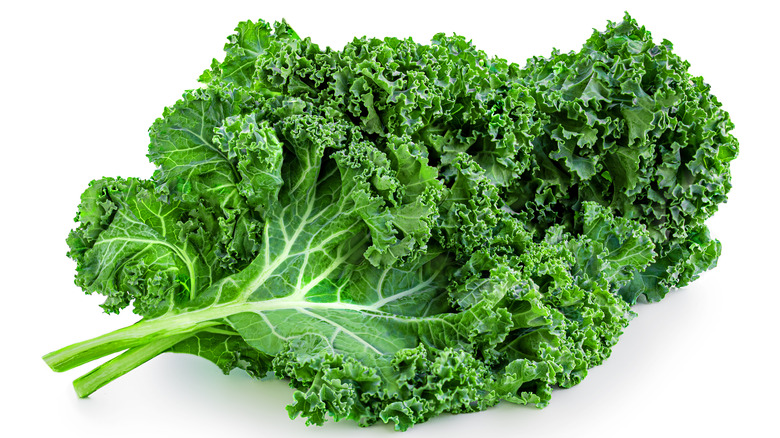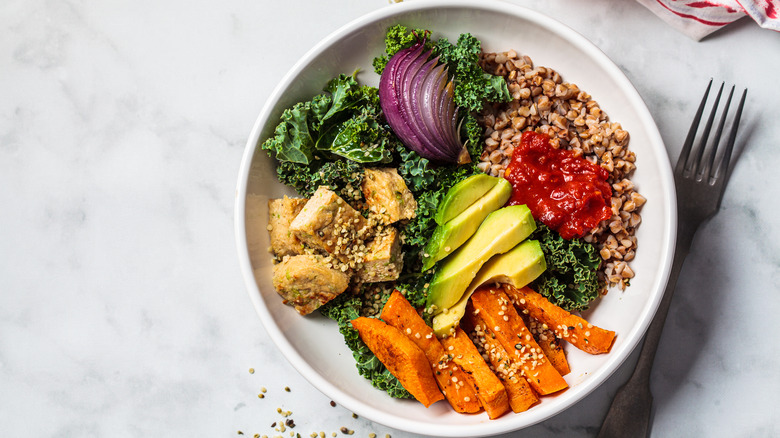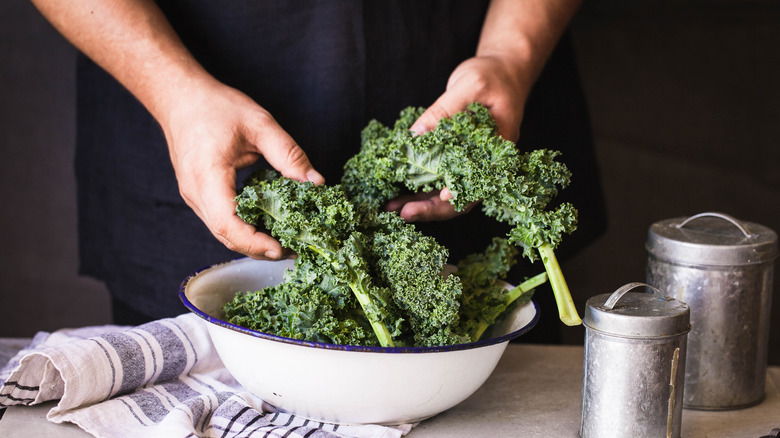The Foolproof Way To Strip Kale Leaves Using Tongs
For many years people have recognized kale as a versatile vegetable that packs a major nutritional punch. To be honest, kale has almost become the poster child for good eating habits. We add it to smoothies, use it as a base for salads, juice kale, and eat a variety of kale dishes, all in the name of living a healthy lifestyle.
While many so-called superfoods have come and gone, kale has stood the test of time mainly because it delivers on its nutritional promises. As Medical News Today notes, kale is high in fiber, antioxidants, vitamins C and K, iron, calcium, and a host of micronutrients.
We also find that a diet rich in this cousin to cabbage and Brussels sprouts has been purported to help in the treatment of some medical disorders like type 2 diabetes, digestive problems, high blood pressure, high cholesterol, and heart disease (via Healthline). These are just a few of the many benefits these leafy greens can potentially deliver. Still, preparing kale can be tricky for inexperienced cooks.
An easy way to strip kale leaves
One issue some people have when cooking with kale is that the stalks are hard, and it can be time-consuming to strip the more tender leaves from these central ribs. If this is an issue you have run into, you can rest easy thanks to an Instagram video posted in March by The Modern Nonna. To be honest, this trick is so simple and quick that you could almost miss it watching the video.
All you need is a set of kitchen tongs — the type with a loop on the end. Simply slide kale stalks through the loop from the root end. As the loop slides up, it will strip away the tender leaves and leave you with a clean stem to discard or add to your favorite smoothie. The leaves, of course, can be used in whatever dish you have in mind. It doesn't matter if you're making kale salad or chips — you'll have clean leaves to work with.
The video does specify using tongs, but anything with a smallish hole you have around the house will work. A slotted pasta spoon or wire coat hanger fashioned into a loop could be utilized in a pinch.
We should add one word of caution here. According to Harvard's T.H. Chan School of Public Health, people taking blood thinners should consult with their doctors before eating kale or other cruciferous greens. Being high in Vitamin K, they may interfere with some anticoagulant medications.
Why you shouldn't throw away kale stems
Most people throw away their kale stems without giving them a second thought. As natural health expert and fitness coach Thomas DeLauer explained in a YouTube video, people find the stems bitter, tasteless, and fibrous, making them hard to chew.
However, he goes on to explain that the stem of the kale plant is actually the most nutrient-dense portion of the plant, and throwing them away deprives us of most of the compounds that make kale healthy. An article in mindbodygreen echoes this claim and calls for cooking or pickling the stems to make them more palatable.
Luckily there are a number of ways to make the stalks less pungent and easier to chew. Bon Appétit offers several suggestions, including dusting them in flour and frying them into crunchy kale nuggets, as well as blanching, which helps them freeze better (alternatively, you can add the blanched stalks to any dish in which you'd typically use the leaves). Another slightly more intriguing idea is to pickle the stems, treating them the same way you would cucumbers using your favorite brine recipe. So even if you're making a recipe that calls for kale leaves exclusively, at least you won't have to let the stalks go to waste.


